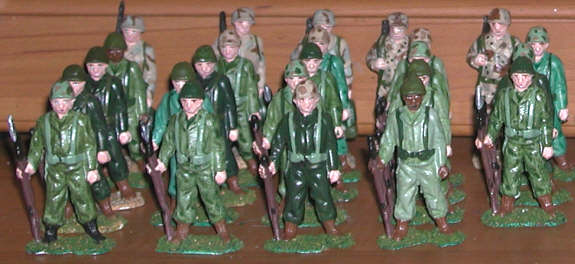
Copyright 2008 All Rights Reserved
From Classic Soldiers to Other Troops
.Start with the classic American G.I. in green fatigues. This is the standard soldier circa 1944 - 1980. Nothing much you can do with him, except paint him in the classic style, right? Yahoo! The Green Machine!

It's a green day in this neighborhood, or is it? What is going on in that back row?
Let us take a look...

Some of those fellows are not exactly green! They look a bit modern for this crew.
Look again. Here comes a real color change.
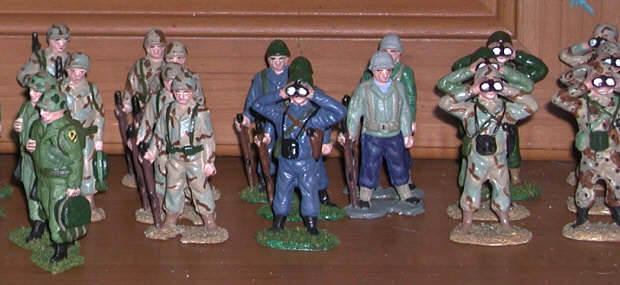
Camouflaged men in modern desert fatigues....a sailor in deck jacket and leggings...airmen in AF Blue....the First Cav?
Toy Soldier Art is just that: art. What we cannot get, we make something else do. The same cast soldiers for the classic Army can be put to other uses. Sometimes it is as easy as a brush stroke, and sometimes it takes a little applied filing.
Below you see three figures. The paratrooper in his red beret is a simple one. All you have to do is snip or file off most of the helmet to make a beret. After that, it is a matter of painting him to get a paratrooper, ranger, special forces man, etc.
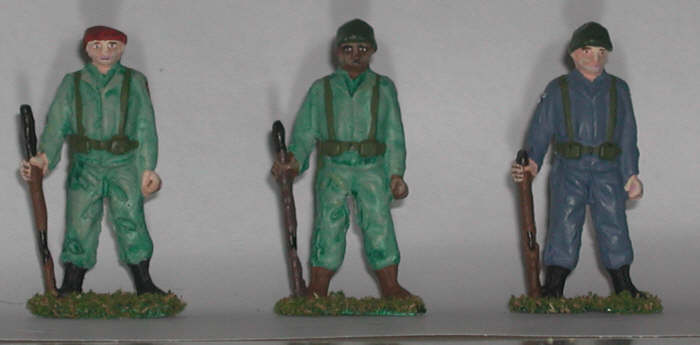
The man on the far end is not different from the classic GI in the center, except that he is painted blue. It is a cheap trick to make an air force man. His webbed gear is green, like the Army. The air force uses Army equipment when it must.
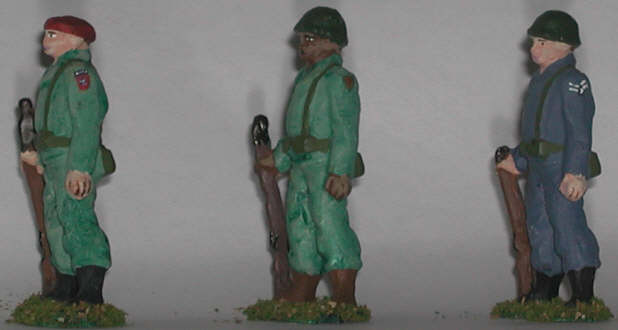
Shoulder patches take some work. Among the easier patches are the 82nd Airborne red rectangle with blue circle in middle, blue arc on top), 1st Infantry Division (dark olive drab shield with red number 1) and First Cav (yellow shield, black horse head and stripe). Airman's stripes are a bit harder to do.
Desert camouflage takes a bit more work. You may have to alter the figure, if possible. The main filing trick is the helmet top, which is flatter than the old steel helmet.
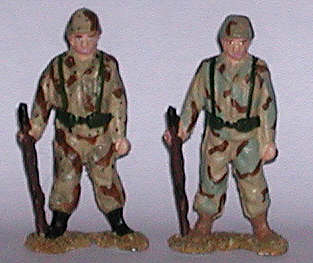
The man on the right has a slightly flatter helmet. However, the only real trick with these two is the paint. The one on the left is Desert Storm, and the right is Iraqi Freedom. The camo differs. The earlier camo had more colors. At that time, black boots and green jungle boots were the norm.
Our more recent soldier has a three-color camouflage consisting of light tan, sage and brown. His boots are medium to light brown. The modern boot has unfinished leather facing outwards, like suede.
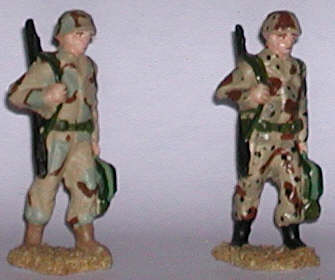
The soldiers to the right have had their helmets filed slightly. They have also had their rifle barrels shortened and clipped to resemble an assault rifle. A pistol grip handle is painted on. With very little work ,we get figures that have the look of modern troops. The one on the left is Iraqi freedom, and on the right is Desert Storm.
Of the two styles of camouflage, the later three-color pattern is easier to do. In my opinion, it looks better. The colors are clear and crisp. The older pattern is less distinct, as some shades are not all that different from one another. The two tan shades are very close to one another.
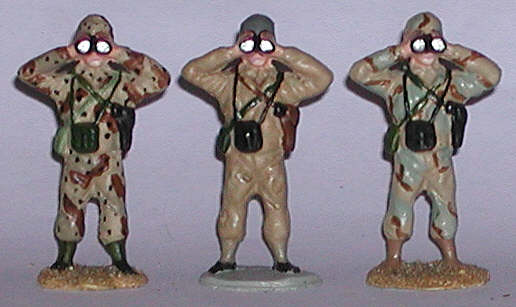
Along with illustrating the variations in camouflage, this trio of observers has another trick. Look at the center figure in khaki tan. He is not modern. He is a World War II figure. The telltale sign is the khaki leggings. What kind of soldier is he? He is not. His helmet is gray. He is either a Navy Chief or officer standing on deck. Leggings were usually issued for shore parties. They were usually no party, as the sailors were armed to fight as infantrymen..
Would you like one of these soldiers? I can make one for you at a very fair price.
Contact Us at thortrains@comcast.net